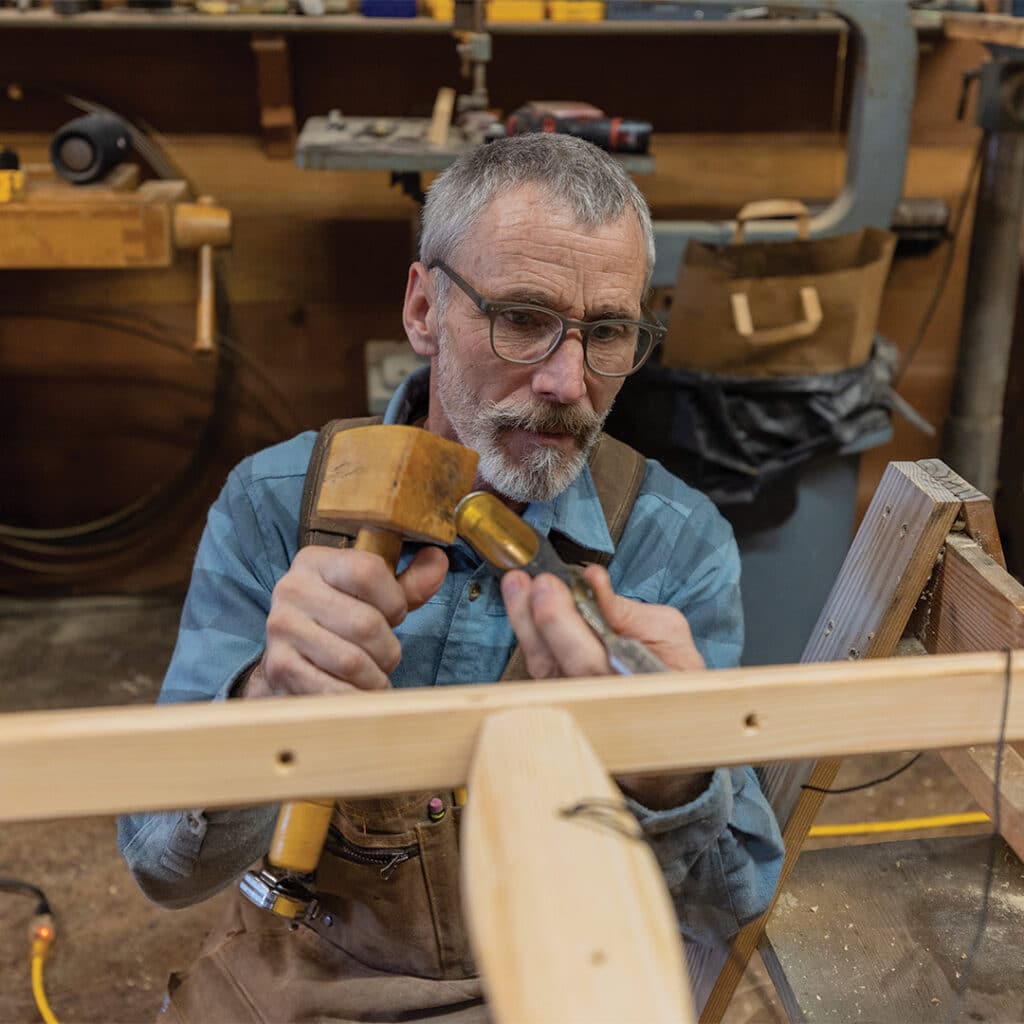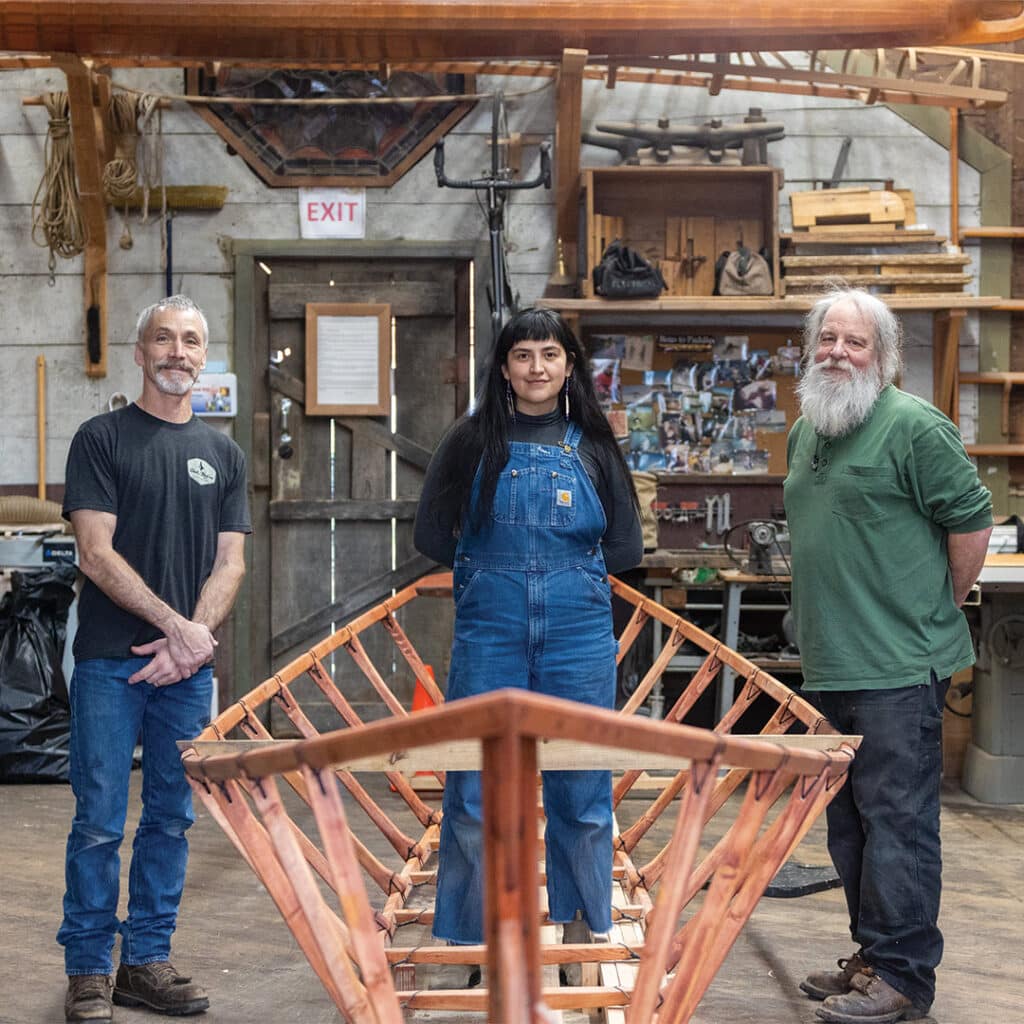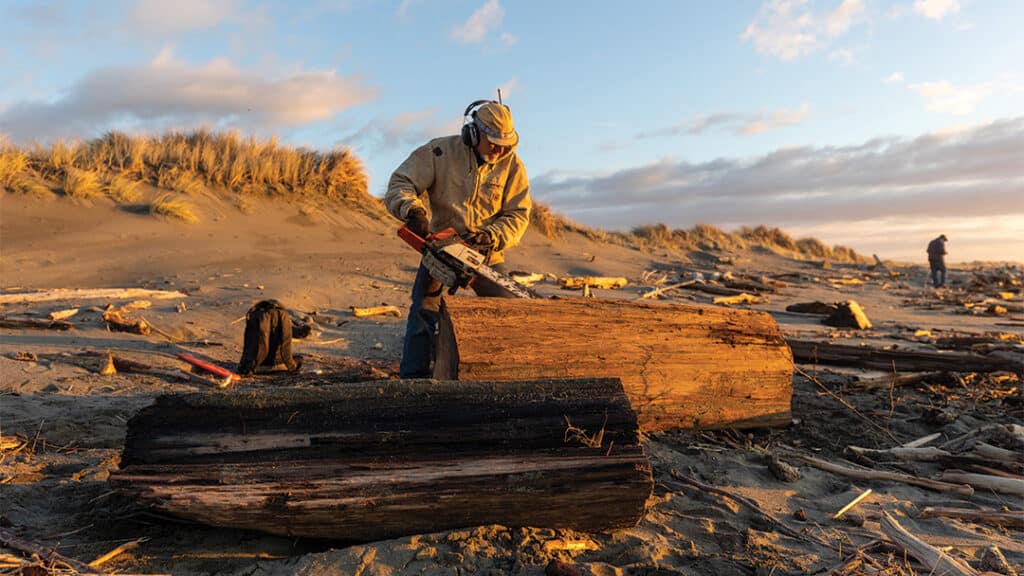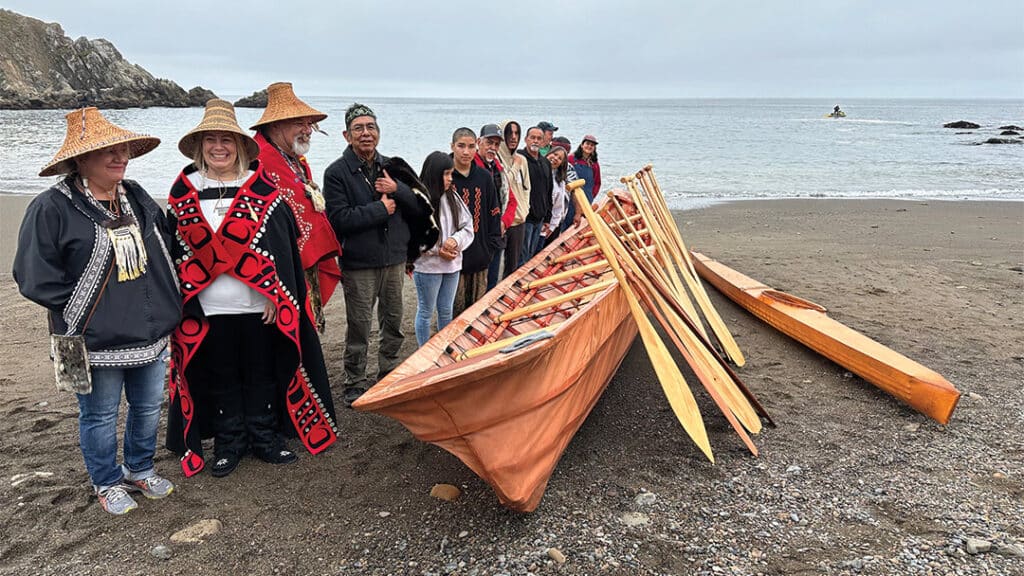Launching a Legacy
Native American Boats Crafted by Marc Daniels…
Marc Daniels has long been fascinated with sealskin boats, and lately he’s become rather obsessed with the nigilax, a large open boat traditional to the Unangax people of the Aleutian Islands.
There was just one twist: a nigilax hadn’t been on the open sea for more than 200 years. The indigenous craftsmen who built them had been forced off their ancestral lands by Russian fur traders and their big boats were destroyed. Also lost was the knowledge of how to build them.
“In their culture, there was no written language. That (boatbuilding) craft was passed along orally,” the Ferndale resident says. “The abruptness of the Russian fur seekers coming through and sweeping up the men who knew how to build boats was like blowing up the library. It was hugely disruptive.”

The lack of instructions did not deter Daniels, who has spent the better part of three decades studying and building the iqyax, or traditional sealskin kayak. After years of living and working with Unangax people on the windswept island of St. Paul deep in the Bering Sea, poring over artifacts in museums and reading historical accounts, Daniels completed his first nigilax build last year in Anchorage as part of a Head Start program.
Successful nigilax builds followed, first with a Cook Inlet native group and later on the island of Atka. Each project was a collaborative affair involving members from regional tribes and community members.
As much as he enjoyed helping the Unangax people in Alaska to reclaim an essential part of their seafaring heritage, Daniels was eager to return to his Humboldt County home of the past 10 years and organize a nigilax build at Mind’s Eye Manufactory & Coffee Lounge in Ferndale, the center he operates with his wife, Leah.

Prior to starting, Daniels connected with local members of the Wiyot and Wailaki tribes in the Eel River valley, as well as local Unangax people and the Qawalangin Tribe of Unalaska (an island in the Aleutian chain). He also invited members of any other tribes in the region as well as non- Native community members.
A California Arts Council “impact projects” grant kickstarted the Ferndale nigilax build after months of discussion, planning and fundraising. Christopher Grimes, who had recently relocated to Eureka, says he became an unexpected – but appreciative – member of the nigilax build crew.
“I walked into a quirky coffee shop in Ferndale for a coffee and ended up finding new friends and an outlet for my woodworking skills,” Grimes says. “We worked six days a week for months finding wood, milling and shaping the various pieces of the boat and becoming a functional team, and more importantly, friends. People came from the NavajolandsintheSouthwest,fromUnalaska,Washington, California coastal communities, the various mountain areas and tribal lands inland from the coast. Entire families joined the project and many wonderful cultural exchanges transpired. A little coffee shop in Ferndale literally changed my life in a good way.”
Daniels, who also works as a contractor when he’s not involved in his boatbuilding passion, says those kinds of friendships and cultural exchanges was a goal of the nigilax build. He’s also hoping to spark an interest in others, Native and non-Native alike, to appreciate the past and make it a part of the present.

“I’m always looking for ways to take what I’m introducing or reintroducing and making it relevant. Not ‘look at this amazing technology our ancestors did,’ but to make it real, have them build it themselves and take it out on the water,” Daniels says.
The earliest Unangax builders would scour the beach for driftwood to use in their boat frames, and the Ferndale build was no different. Daniels says the Unangax designed their boats to mimic the bodies and movements of sea mammals and would cover the frames with the skin from sea lions. An industrial grade of nylon was substituted for the new boat.
The completed nigilax was launched May 27 during Alaska Native Day celebrations at Fort Ross. The ceremony marked a full-circle for the Unangax people and their nigilax boats, Daniels says. In the late 1700s, Russian fur traders conscripted the Unangax people and forced them into massive sea otter hunts before relocating them to the Russian establishment on the present-day Sonoma County coast.

Daniels says the Russians quickly learned that the Unangax could fit 20 or more men into a nigilax and slip away; to prevent such escapes, they destroyed the vessels. The subjugated Unangax were never able to return to their villages.
Grimes, who served as an apprentice builder, says the launch was a special day. “The water was calm and welcoming as representatives of many tribes came together for a blessing ceremony, welcoming of elders and allowing the saltwater to welcome another of its own.
“I believe the nigilax belongs to the sea and looks forward to bringing young people onto the local waters to explore andlearn,”Grimessays.“Sealionsandotterswelcomedthe nigilax upon the ocean.”•
www.mindseyemanufactory.com




